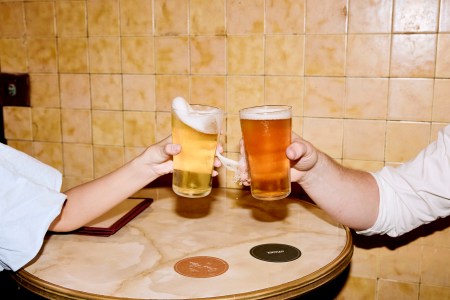
Pubs and beer go hand in hand, and data from CGA’s On Premise User Survey (OPUS) shows that it is still the most popular choice in-venue with 44 per cent of consumers drinking it.
The total beer category has been losing market share for some time and traditional beer sales face threat, but retained consumer interest on-premise could be fueled by Australia’s appetite for craft beer.
The CGA’s most recent OPUS craft beer report revealed increased consumer engagement with craft beer, and according to research by the IWSR, global craft beer sales have trebled in the last decade as the craft revolution has gained momentum, underpinned by consumer curiosity and a willingness to pay a premium for artisan beers.
Hotel Jesmond is a Newcastle institution and a favourite among local beer enthusiasts thanks to its extensive range of independent craft beers. Operations manager Steph Carter notes that the craft beer landscape is continually evolving, with some rapid shifts in beer trends in recent years.
“We have definitely noticed a shift returning towards the more traditional style of beers that are less full and fruity. Patrons overall are tending to look for beers that are lower in alcohol and are more sessionable.
“We have also noticed craft beer drinkers are increasingly interested in locally brewed beers to support community during the tough times of Covid and increasing cost of living.”
Mellow yellow
Despite the rise of extreme flavour profiles that pubs and patrons once went wild for, there has been a slight curtailing in recent years,making way for the return of more traditional styles.
The Elephant British Pub is a Tudor-style pub nestled in Adelaide’s vibrant East End. Curator of an extensive range of local and international beers, assistant venue manager and cellarman Patrick O’Gorman spoke about the changing landscape of the craft beer scene.
“We have definitely seen the amount of crazy flavour profiles dial back in recent years. With the increase in small craft breweries popping up, perhaps everyone wanted to get their brand out there and needed something eye-catching to get their foot in the door.
“Not everyone has seen beer as their drink of choice and with the craft beer varieties expanding in recent years it has captured a wider target market. Now that the market has expanded, I believe the amount of obscure and somewhat unique flavour profiles has mellowed.”
If the diversification of the category was driven by brewers, the dial down has been driven by consumers who know exactly which style of beer they prefer to drink. Flavour-forward craft beers are still present in the pub scene and well-established brands are dominating, as Carter explains.
“At Hotel Jesmond, we take a lot of pride in continually curating a diverse craft beer selection that resonates with the evolving preferences of patrons. The Stone & Wood Pacific Ale continues to captivate the majority of our craft beer enthusiasts with its distinctive profile.
“We’ve also noticed a slight shift in popularity towards the heavier style of craft beers, such as Bentspoke Crankshaft and Voodoo Ranger, both having quite high alcohol percentages. We provide the opportunity for a rotating tap of local beers, currently we have Good Folk’s Danny’s Wedge proving to have a quality following.”
In September 2023, Applejack Hospitality reopened Darlinghurst’s heritage pub the Taphouse with 20-plus taps showcasing Sydney’s favourite breweries. Group beverage manager Joe Worthington explained which craft beer styles are proving popular as we head into summer.
“Hazy pale is certainly enjoying its day in the sun. The modern classic of Stone & Wood and now the new up and comer Mountain Culture are dominating a big chunk of beer sales.”
Mastering moderation
Not only have consumer preferences changed in the sense of styles, there has also been a shift in alcohol content preferences. Craft beer enthusiasts are still showing an interest in higher alcohol content, but publicans have also noticed growing demand for no- and low-alcohol beers.
“In previous years we have seen the alcohol strength in craft beers being quite high, anywhere from six to eight per cent and higher,” says O’Gorman. “We have seen a shift towards mid-strength and especially non-alcoholic beers being a real focus in the industry of late and being produced by large and small beverage chains.
“This is branching out to a wider community of beer and non-drinkers, and also lends itself to the sessionable market for when you can’t withstand the same amount of drinks with a higher ABV.”
Tapping into demand for lower strength craft beers gives pubs trading-up potential, and the opportunity to convert moderation drinkers from cheaper soft drinks to higher value spends with an increased likelihood of repeat custom.
“I’d say your bigger, punchier ABV beers are giving way to more session styles,” added Worthington. “We still sell the delicious Grifter Big Sur IPA which is a punchy 6.7 per cent, however we’ve recently taken on Young Henry’s Stayer, a tasty 3.5 per cent, and Hawkes Half XPA, which is 1.75 per cent ABV.
“This certainly tells me that there’s a bigger split than ever, but I’d say it’s more that people are picking and choosing their moments better. Less is more during the week, and on the weekends you can nudge it.”
This article was first published in Australian Hotelier. Subscribe to the newsletter for the latest pub news across Australia.
